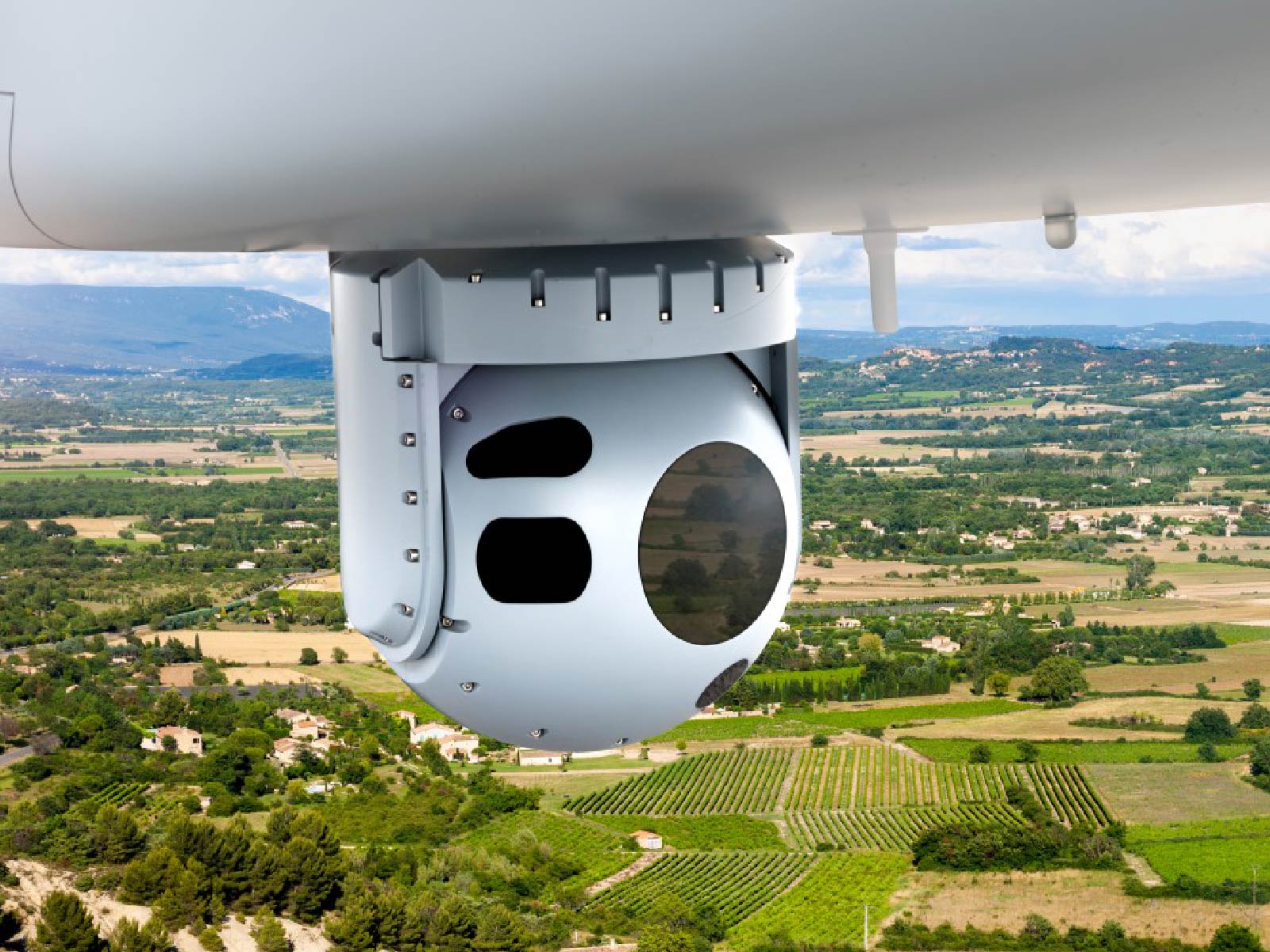
EO-IR Systems: A Game Changer in the Defence and Surveillance Space
In today’s security and defence landscape, the ability to monitor, detect, and track potential threats with precision is more crucial than ever. Electro-Optical and Infrared (EO-IR) systems serve as the backbone of modern surveillance, providing unparalleled visibility across a range of environments and conditions. These advanced imaging systems are widely used in military operations, homeland security, and industrial monitoring to ensure continuous situational awareness.
This article explores the fundamentals of EO-IR systems, various zoom options that enhance surveillance capabilities, the concept of Detection, Recognition, and Identification (DRI), and the overall impact of these technologies on defence and security applications.
What Are EO-IR Systems?
EO-IR systems are sophisticated imaging solutions that combine electro-optical (EO) and infrared (IR) sensors to capture real-time visuals in both visible and non-visible spectrums. These systems are essential for detecting objects in low-light, adverse weather, and high-security environments.
Key Components of EO-IR Systems
Electro-Optical (EO) Sensors
EO sensors capture high-resolution images using visible light, functioning similarly to standard digital cameras. They are particularly effective in daylight operations, providing clear and detailed images for surveillance, reconnaissance, and target identification. These sensors are essential in applications where visual confirmation is necessary, such as monitoring borders, securing critical infrastructure, and conducting aerial reconnaissance.
Infrared (IR) Sensors
Infrared sensors operate across different wavelength bands—Long-Wave Infrared (LWIR), Mid-Wave Infrared (MWIR), and Short-Wave Infrared (SWIR)—each serving distinct surveillance and detection purposes.
- LWIR (Long-Wave Infrared): Detects heat signatures emitted by objects, making it highly effective for thermal imaging, night vision, and target detection in complete darkness or obscured environments such as smoke and fog. LWIR is commonly used in security monitoring, firefighting, and military operations for detecting hidden threats.
- MWIR (Mid-Wave Infrared): Offers higher sensitivity and greater detection range than LWIR, making it suitable for long-range surveillance and target tracking. MWIR sensors are widely used in defense applications, missile guidance, and industrial inspections where temperature differentiation is critical.
- SWIR (Short-Wave Infrared): Unlike LWIR and MWIR, SWIR does not rely on heat emissions but instead detects reflected infrared light. This allows it to produce high-contrast images in low-light conditions and penetrate certain obscurants like haze, smoke, and glass. SWIR is useful in covert surveillance, industrial quality control, and identifying camouflaged objects.
By integrating LWIR, MWIR, and SWIR into EO-IR systems, operators gain a more comprehensive situational awareness, ensuring effective surveillance and threat detection across varying environments and conditions.
Image Processing Units
Image processing units play a crucial role in EO-IR systems by enhancing visibility and extracting meaningful data from sensor inputs. These units employ advanced algorithms to improve image clarity, remove noise, and highlight critical details. By analyzing thermal and optical imagery in real time, they help operators make informed decisions quickly. Modern image processing technology also incorporates artificial intelligence (AI) and machine learning to automate threat detection, anomaly identification, and object tracking.
Multi-Spectral and Fusion Technology
Some EO-IR systems integrate multiple imaging technologies, including thermal, Mid-Wave Infrared (MWIR), Short-Wave Infrared (SWIR), and visible light sensors, to provide a more comprehensive surveillance solution. Multi-spectral imaging enhances situational awareness by capturing different wavelengths of light, revealing details that may be invisible to a single sensor type. Fusion technology combines inputs from multiple sensors into a single, high-contrast image, improving detection capabilities in complex environments. This approach is widely used in defense, law enforcement, and industrial inspection applications to ensure accurate threat assessment and operational efficiency.
EO-IR systems play a critical role in long-range monitoring, especially in applications where continuous surveillance is required over vast areas such as military bases, borders, and industrial plants.
Zoom Options in EO-IR Systems
Zoom technology is a critical feature of EO-IR systems, as it determines how effectively an operator can monitor and analyze distant objects. Different zoom mechanisms provide varying levels of clarity and flexibility in tracking.
Types of Zoom Technology
Optical Zoom
Uses lens movement to magnify distant objects without losing image quality. Essential for military reconnaissance and high-precision surveillance.
Digital Zoom
Enlarges the image electronically but may reduce resolution. Often combined with optical zoom to balance detail and range.
Continuous Zoom
Provides smooth, real-time magnification, allowing operators to track moving targets seamlessly without abrupt jumps in view.
Hybrid Zoom
Integrates both optical and digital zoom capabilities to optimize long-range imaging performance.
The ability to zoom in on distant objects while maintaining image clarity is a crucial factor in threat detection, reconnaissance, and intelligence gathering.
Understanding the DRI Concept (Detection, Recognition, Identification)
The effectiveness of EO-IR systems is measured using the Detection, Recognition, and Identification (DRI) model. This framework evaluates how well a system can detect and classify objects at various distances.
Breakdown of the DRI Concept
- Detection: The ability to spot an object (e.g., vehicle, human) at a distance without identifying its specifics.
- Recognition: Differentiating between object types (e.g., a civilian vehicle vs. a military truck).
- Identification: Determining distinct features (e.g., vehicle make, uniform details, weapons carried).
Factors such as zoom capabilities, sensor resolution, environmental conditions, and imaging technology (EO, thermal, MWIR, SWIR) directly impact DRI performance. Military and security forces depend on precise DRI data for threat assessment and engagement decisions.
Impact of EO-IR Systems on Defence and Surveillance
EO-IR systems have transformed defence and security operations, offering superior situational awareness across multiple sectors.
Military and Defence Applications
EO-IR cameras play a crucial role in border security by detecting illegal crossings and unauthorized movements, even in complete darkness. They are also widely used in aerial surveillance, mounted on drones and aircraft for high-altitude reconnaissance and intelligence gathering. Additionally, these cameras are integrated with weapon systems to enhance precision in military strikes, making them essential for target acquisition.
Homeland Security & Law Enforcement
EO-IR cameras play a vital role in crime prevention by helping law enforcement monitor public areas and track suspects. They are also essential in search-and-rescue operations, as thermal imaging assists in locating missing persons in remote or disaster-struck regions. Additionally, these cameras support threat assessment by identifying suspicious activities in high-risk locations such as airports and national borders.
Industrial and Commercial Uses
EO-IR cameras are crucial for critical infrastructure protection, securing power plants, oil refineries, and airports against potential threats. They also play a key role in maritime surveillance by monitoring ship movements and detecting unauthorized activities in coastal waters. Additionally, thermal cameras aid in fire detection by identifying hotspots in industrial sites and helping prevent fire hazards.
Future Trends in EO-IR Technology
Advancements in EO-IR technology are driven by AI and machine learning, which automate target detection and threat assessment, reducing human error. Another key innovation is advanced sensor fusion, which integrates EO, IR, and SWIR imaging to create a more comprehensive surveillance system.
Miniaturization has also led to the development of compact EO-IR cameras, making them suitable for drones and wearable surveillance gear. Additionally, extended long-range zoom capabilities enable better tracking of distant objects without losing resolution, enhancing overall situational awareness.
With these innovations, EO-IR systems will play an even greater role in securing nations, industries, and public spaces.
Conclusion
EO-IR systems are an indispensable tool in modern surveillance and defence, offering continuous monitoring, target tracking, and enhanced security across multiple domains. By integrating zoom technology, thermal and SWIR imaging, and DRI principles, these systems provide unparalleled situational awareness in high-risk environments.
As advancements in AI and sensor technology push the boundaries of imaging capabilities, EO-IR systems will continue to redefine how security forces and defence agencies operate. Whether in battlefields, urban surveillance, or industrial safety, EO-IR technology remains a cornerstone of modern security infrastructure.
